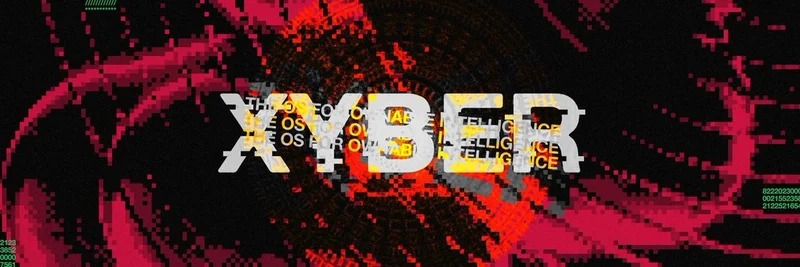On March 22, 2025, a heated debate erupted in the blockchain community when Solayer accused Eclipse of copying its whitepaper design. The controversy, detailed in an X post by c4lvin from ChainLight (@SiwonHuh), dives deep into the technical similarities and differences between the two projects. Both Solayer and Eclipse leverage the Solana Virtual Machine (SVM) to enhance blockchain performance, but the overlap in their approaches has sparked questions about originality and ethics. Let’s break down the drama, the tech, and what it means for the blockchain space.
Understanding Solayer and Eclipse: The Basics
Solayer is a Layer 1 (L1) blockchain that uses SVM as its execution environment. It has its own consensus mechanism but can fall back to Solana’s consensus in edge cases, making it somewhat like a Solana sidechain. A key feature is its "sequencer" node—a fixed leader that handles transaction scheduling, execution, and block generation. Solayer aims to eliminate bottlenecks in parallel execution blockchains by using hardware acceleration (like Infiniband for ultra-fast data transfer) and clustering transactions into distinct stages for processing.
Eclipse, on the other hand, is an Ethereum Layer 2 (L2) solution, also using SVM, but it settles transactions on Ethereum. It focuses on maximizing transaction speed through an optimized SVM, delegating consensus to Ethereum, and using a sequencer for transaction processing. Eclipse employs hardware accelerators like SmartNICs and FPGAs to pre-process transactions and relies on probabilistic preconfirmation to enhance security.
Both projects tackle the same problem—improving performance in parallel execution blockchains—but their approaches, while overlapping, differ due to their L1 vs. L2 structures.
The Core of the Dispute: Similarities in Design
The X post by c4lvin highlights several areas where Solayer and Eclipse’s whitepapers seem to overlap, fueling Solayer’s claim of copying. Let’s explore the key similarities:
Hardware Acceleration
Both projects use hardware to boost performance. Solayer uses Infiniband, a high-speed network adapter, to accelerate data transfer between nodes, enabling nanosecond communication for transaction pre-processing and state access. Eclipse uses SmartNICs with FPGA hardware to pre-process transactions and parallel NVMe SSDs to speed up data access. While the hardware differs, the goal is the same: overcoming bottlenecks in transaction processing and state access. However, c4lvin notes that this might be a case of "convergent evolution"—a natural overlap in solving a common problem—rather than deliberate copying.
Transaction Clustering
Solayer separates transaction processing into clusters: one for validation, another for pre-execution, and so on, to maximize parallel processing. Eclipse takes a different approach, assigning transactions to CPU core clusters called "Hotspot Islands" based on the target decentralized app (dApp). Each Hotspot Island optimizes scheduling for its specific dApp type. While both cluster transactions, Solayer focuses on processing stages, and Eclipse on transaction types, making the similarity more conceptual than identical.
Transaction Scheduling
Scheduling transactions efficiently is crucial for parallel blockchains. Solayer uses a prediction model (DESP) to simulate transactions and avoid conflicts, dynamically scheduling them to reduce contention. Eclipse employs real-time reinforcement learning for scheduling, switching between optimistic and pessimistic strategies based on workload. Both use predictive models and dynamic scheduling, which c4lvin notes could support Solayer’s claims of similarity, though such techniques aren’t entirely novel in the industry.
Controversies and Errors
The dispute isn’t just about similarities—it’s also about mistakes and ethical concerns.
Eclipse’s Whitepaper Error
Eclipse’s 70-page whitepaper claims Solana validators use RocksDB for storage and compares it unfavorably to Eclipse’s Key-Value storage. However, as pointed out by @shoucccc, Solana’s current clients, Agave and Firedancer, don’t use RocksDB. This error, noted in the X thread, undermines Eclipse’s credibility, and the team has yet to respond.
Solayer’s Lack of Citations
On the flip side, @ballsyalchemist criticized Solayer’s litepaper for having zero citations, unlike Eclipse’s 171. In academic writing, citing sources is standard, and Solayer’s omission raises questions about transparency, even if its ideas are original.
Community Reactions and Broader Implications
The X thread sparked varied reactions. Some users, like @zeffie_eth and @need3sleep, praised c4lvin’s detailed analysis, calling him a "GOAT" (Greatest of All Time). Others, like @rinegade_sol, dismissed the controversy with a more colorful response, showing the community’s mixed feelings.
A thoughtful comment from @montblanc_punk suggested the similarities might reflect convergent evolution—where similar problems lead to similar solutions. They also questioned whether Eclipse should acknowledge Solayer’s influence, given Solayer published its litepaper two months earlier.
My Take: Is It Copying or Coincidence?
The overlap between Solayer and Eclipse is undeniable—both use SVM, hardware acceleration, and dynamic scheduling to tackle parallel execution bottlenecks. But as c4lvin points out, these ideas aren’t entirely new in the blockchain space. Hardware acceleration, for instance, is a logical step to improve performance, and prediction-based scheduling has been explored in other contexts.
Eclipse’s whitepaper, released two months after Solayer’s, does raise eyebrows, especially with its error about RocksDB. However, writing a 70-page paper with 171 citations in just two months seems unlikely, as @san.eth noted after spending hours reviewing it. Eclipse likely developed its ideas in parallel, but better transparency—like acknowledging Solayer’s influence—could have avoided this mess.
For Solayer, the lack of citations is a valid critique. Even if they pioneered these concepts, crediting prior work strengthens their case and avoids perceptions of cutting corners.
What’s Next for Solayer and Eclipse?
This dispute highlights the competitive nature of blockchain innovation. Both Solayer and Eclipse are pushing the boundaries of performance, which benefits the ecosystem. Solayer’s InfiniSVM aims for 1,000,000 transactions per second (TPS), while Eclipse positions itself as the go-to L2 for developers seeking high TPS and low costs on Ethereum.
For the community, c4lvin’s call for healthy discussion is spot-on. Rather than fueling drama, stakeholders should focus on the tech—reading both whitepapers, engaging in technical debates, and driving innovation forward. Whether this controversy leads to collaboration or further rivalry, it’s a reminder that in the fast-evolving world of blockchain, ideas often converge, but transparency and ethics remain key.
If you’re a developer or blockchain enthusiast, dive into the whitepapers yourself: Solayer’s litepaper and Eclipse’s (check their official channels for the latest version). Let’s keep the conversation technical and constructive—there’s plenty of room for both projects to shine.




